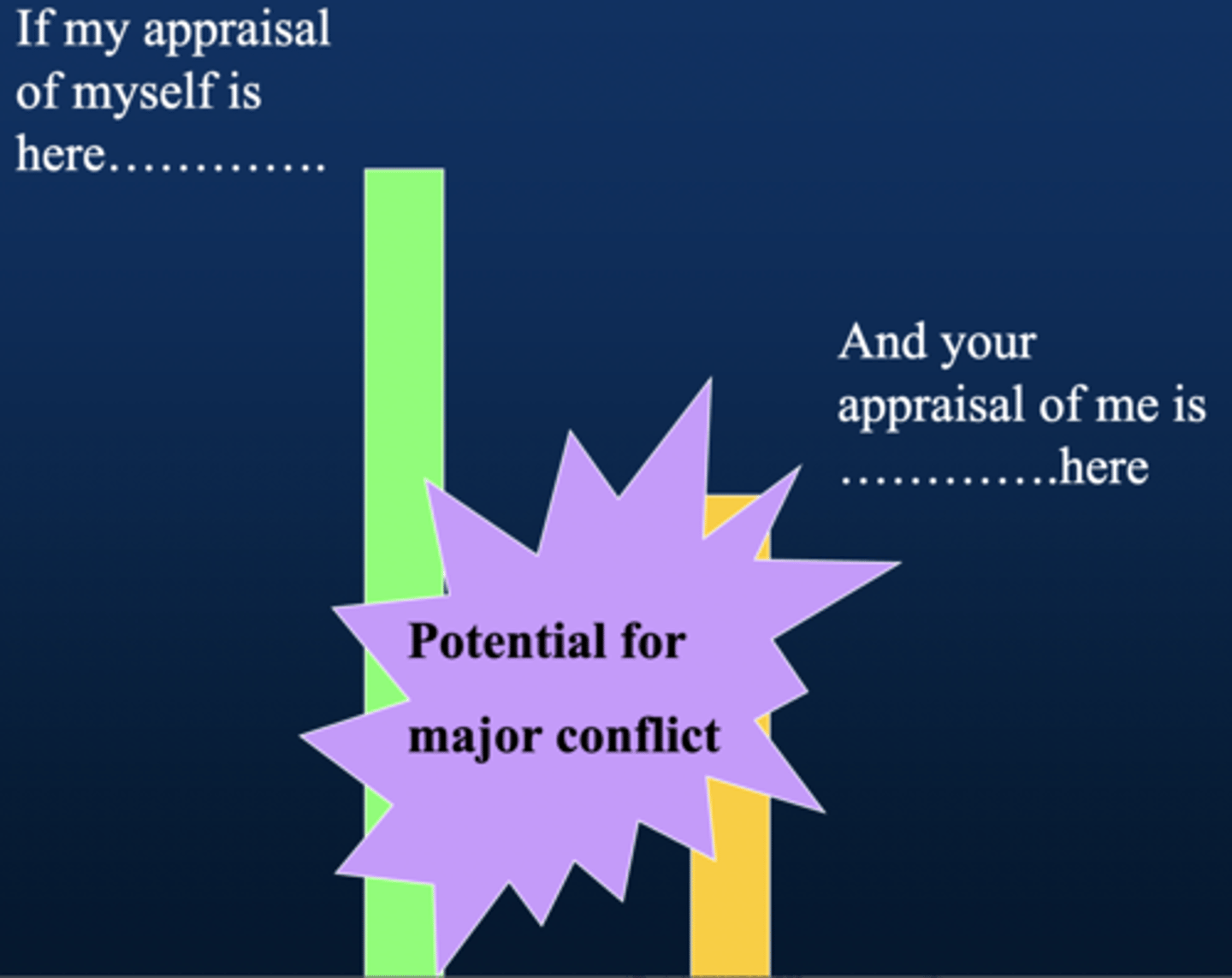Social Psychology - Lectures 7 & 8
1/21
There's no tags or description
Looks like no tags are added yet.
Name | Mastery | Learn | Test | Matching | Spaced |
|---|
No study sessions yet.
22 Terms
The Self: Structure & Content
William James' Concept of the Self
"I" (Experiential Consciousness) → Our Thoughts, emotions, perceptions that we experience moment to moment (in constant flux due to rapid environment change and dynamic).
"Me" (Self-Concept) → Set of beliefs and feelings about what we know about ourselves and who we are.
Looking-Glass Self (Reflected appraisals)
Self-concept is shaped by how we think others perceive us.
Other people are like mirrors that reflect back to us and it tells us something about ourselves (self-concept).
The appraisals are those of other people that are reflected back to us and tells us who we are.
According to psychologists and philosophers, if there were no other people, we would never forge a sense of self.
Example → If someone treats you favorably by holding you closely and showing pleasure, it tells us that we're lovable, favorable, or likable.
Cultural Conceptions of Self: Independent vs. Interdependent Self
"Me thinking" - Independent Self construal
Conformity is often disapproved of (heroes in movies aren't conformists because they challenge and defy authority).
--> distinct, impermeable boundary (capitalism).
"We thinking" - Interdependent Self construal
--> a permeable boundary
Hunter-gatherer tribes are the best example of pure interdependent cultures.
No one has a pure independent or interdependent self, but rather, a matter of degree.
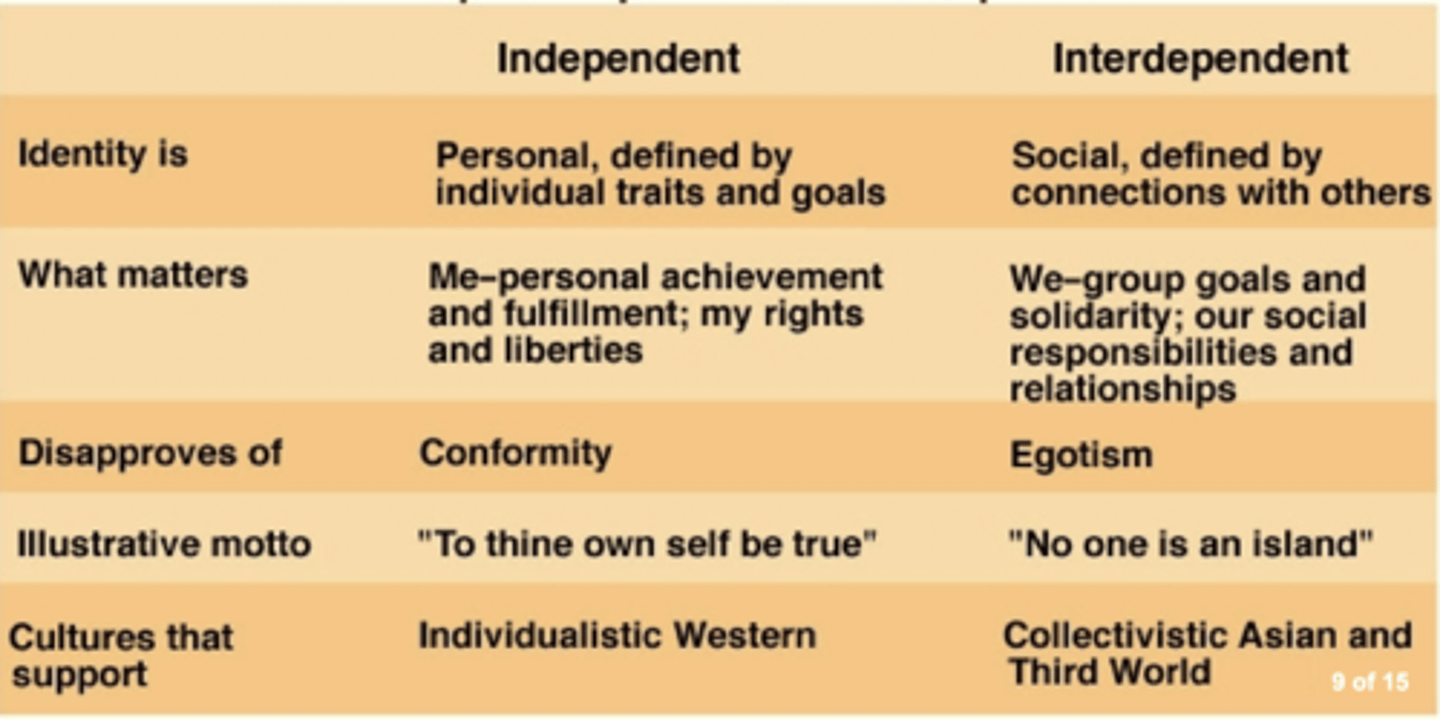
Beliefs About the Self: Self-Esteem
Self-Esteem (self-report)
A global evaluation (Affective/emotional: can be positive or negative) of one's value & competence
→ NOT DOMAIN SPECIFIC (i.e., not tied to specific achievements).
High self-esteem → Feeling valuable, capable, and confident.
Low self-esteem → Feeling unworthy, incompetent, or doubtful.
Beliefs About the Self: Self-Efficacy
Self-Efficacy (Bandura) (self-report)
A set of beliefs and feelings regarding our sense of empowerment, self-determination, and ability to influence outcomes in our lives (great deal of control, influence, and mastery).
Key aspects of self-efficacy:
Choice Behavior: High self-efficacy leads people to take on challenges.
Motivation & Perseverance: More effort, persistence, and resilience (don't give up).
Cognitive Processes: Low self-efficacy individuals imagine failure scenarios lead to diminished cognitive resources (worrying).
Low self-efficacy & self-esteem leads to low control in life --> major depression & stress
Self-Regulation & Self-Control
What is Self-Regulation? (Baumeister’s Theory)
Self-control (aka, self-regulation) is a limited capacity resource that allows us to resist impulses.
Key Trait for Success → Linked to better academics, relationships, and career outcomes.
The Strength Model of Self-Control
It can be “exhausted” in the short-term (glucose expenditure)
Self-control is like a muscle → It can be exhausted (short-term) but strengthened (long-term).
Short-Term Depletion → Self-control weakens with immediate exertion (e.g., resisting temptation uses energy)
Delay-Gratification Task or the Marshmallow Test predicted future success, lower impulsivity, and better life outcomes.
The "Better-Than-Average" Effect
People overestimate their positive qualities compared to the average.
Study (Preuss & Alicke, 2009):
Subjects predicted what other people would rate their videos.
Participants predicted their dating videos profiles would be rated higher than others, but reality didn’t match their expectations.
Results: A majority/most rated their videos highly & a few rated low; Other subjects watched their videos and rated the majority low than high.
Key takeaway: Don't ever rate your own work; BTA effect.
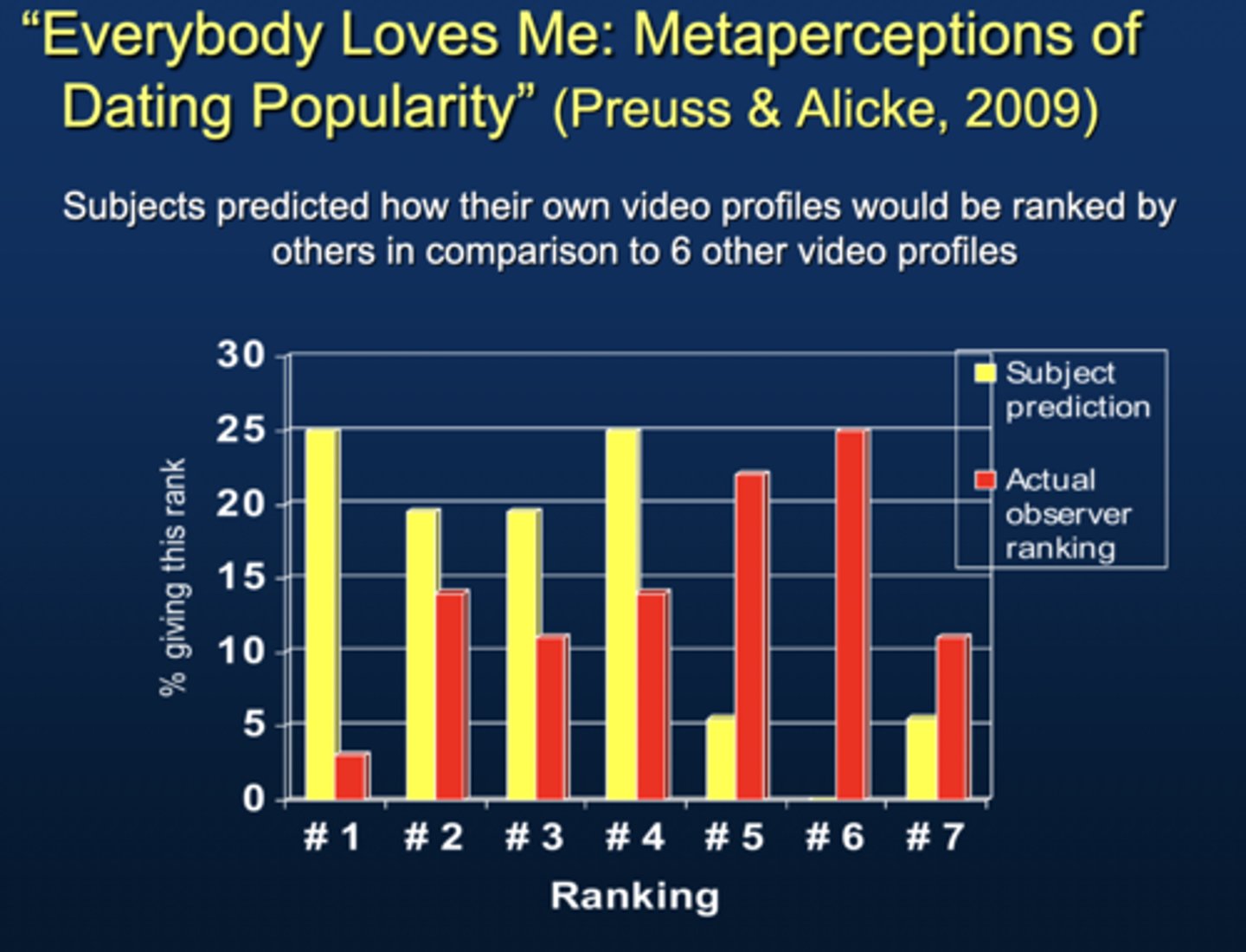
Self-Enhancement Biases
False Consensus → Overestimating how common one's opinions or behaviors are. (e.g., "I cheat on my wife, but so does everyone else")
False Uniqueness → Underestimating how common one's traits (usually positive) or successes are. (e.g., "I'm the only one that shares notes to other students, and no one else does that")
Unrealistic Optimism → People believe they are less likely to experience negative events (e.g., "I won't get divorced" despite stats showing 50% divorce rates).
Weinstein's RU students - Compared to the average RU student, a majority underestimated the extent to which they're at risk.
→ Leads to fewer preventative actions (risks) or decreased effort (e.g., skipping health screenings or working hard for success).
The Barnum Effect → People are much more likely to accept info that reflects favorably on themselves. On the other hand, people are unlikely to accept and challenge unfavorable info of themselves. If its flattering, it must be true.
Remembering Our Own Attitudes (Markus, 1986)
Study: Participants were asked what their attitudes were in 1973; and in 1982 (9 years later), were asked to recall attitudes in 1973 on legalizing pot, women's rights, and affirmative action.
Results: Their recalled attitudes (🟣) were more similar to their 1982 attitudes (more favorable) than their actual 1973 attitudes (🟡).
This suggests attitude reconstruction—people unconsciously revise past attitudes to be consistent with their present views.
Key Takeaway:
Not very good at recalling past attitudes --> inaccurate
We use current attitudes as an anchor and adjust inadequately them to match our current beliefs (anchoring & adjustment heuristic).
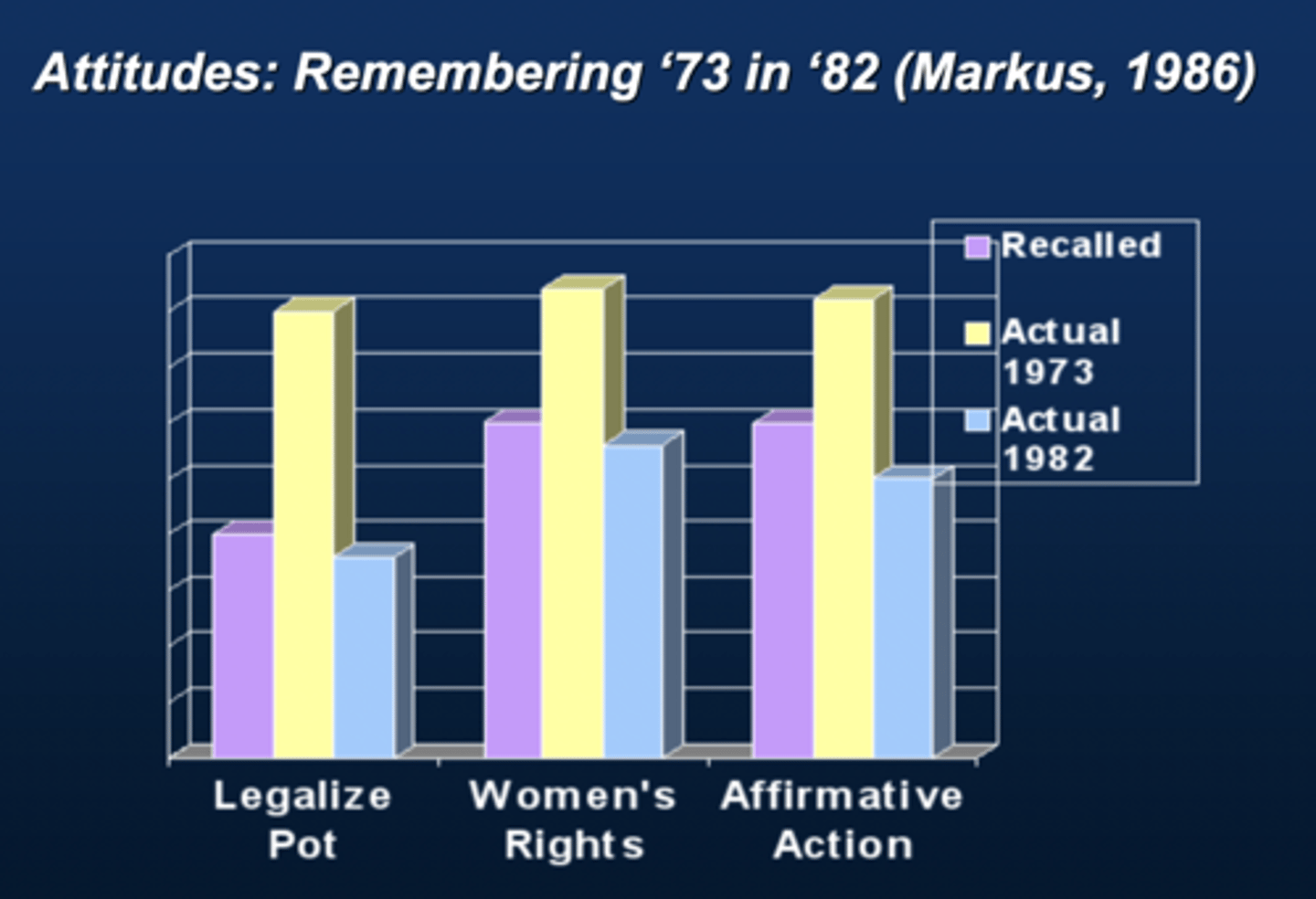
Remembering Our Own Emotions (McFarland et al., 1989)
Study: Women remembered their moods during different phases of the menstrual cycle. They had to journal and write their actual moods everyday.
Results:
Recalled mood (🔴) was more negative than the actual recorded mood (🟡) during menstrual and premenstrual.
This is likely due to societal beliefs (schemas) that premenstrual and menstrual stages are negative
Key Takeaway:
Their memory was contaminated by their schemas that women's moods are worse during the premenstrual and menstrual stages (which is a widely held schema in society).
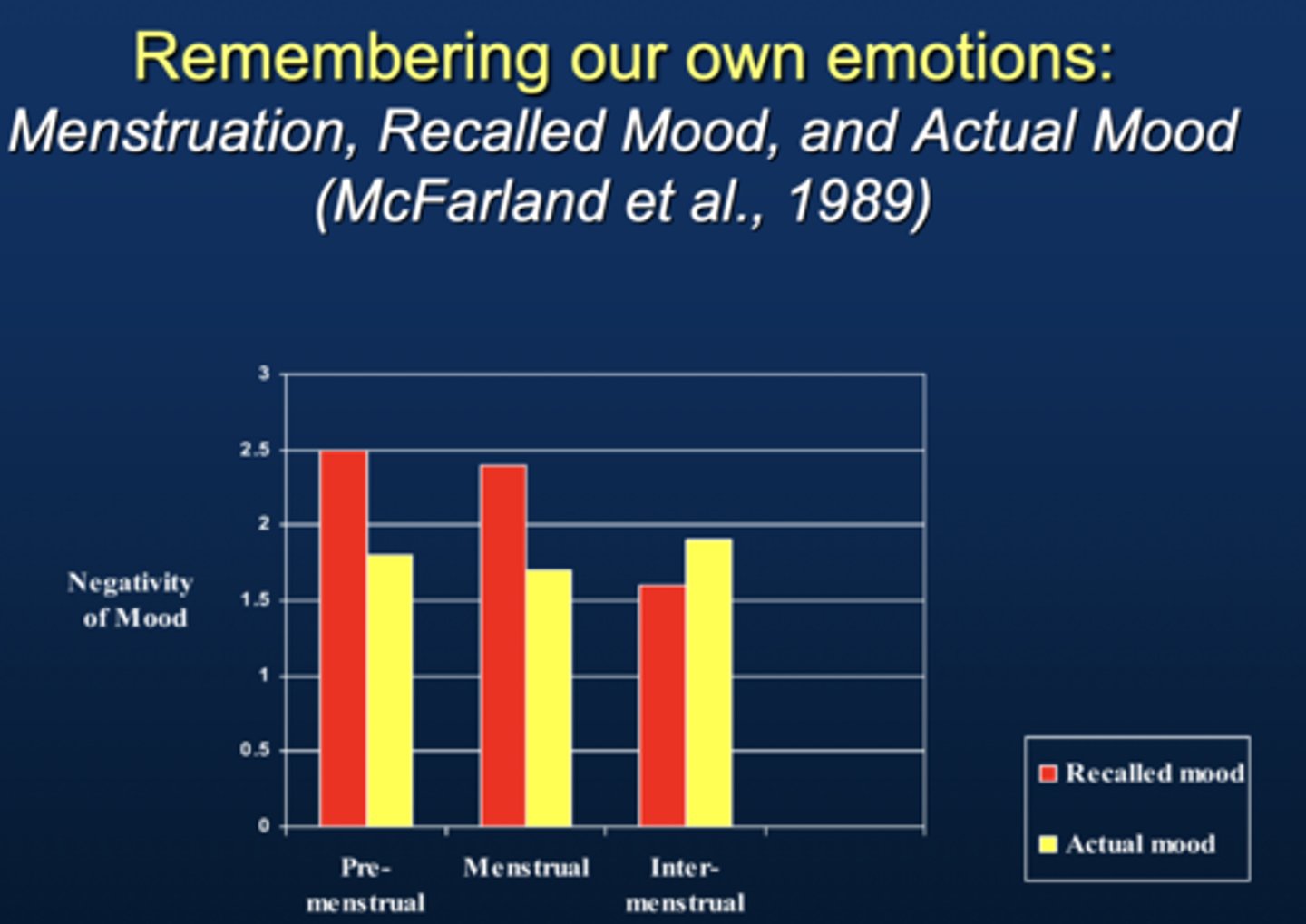
Self-Knowledge: The Fallibility of Introspection (Wilson & Nisbett)
1) Power Saw & Documentary study → Two groups watch the same documentary and rate it.
Group 1: Nice environment
Group 2: Annoying power saw
Results: Subjects in both groups, rated the documentary similarly.
2) "Telling more than we can know" → Subjects chose a poster:
Group 1: Wrote reasons for liking/disliking it.
Group 2: Chose without explaining why (didn't write reasons).
Results: Several weeks later, those who didn't write reasons were more satisfied later → Listing reasons can mislead us as to why you like or dislike something! People often have inaccurate explanations for why they like or dislike something.
3) Cologne/Perfume Study → People chose bottles based on irrelevant features (shape, ribbons, packaging).
Some even claimed one "smelled better" or the shape, despite all having the same scent!
Real reason? → Primacy effect influenced them, yet no one mentioned this as their reason!
Key Takeaway: We easily generate plausible reasons or explanations for why we make choices (like/dislike or accept/reject), but it turns out that they're often wrong.
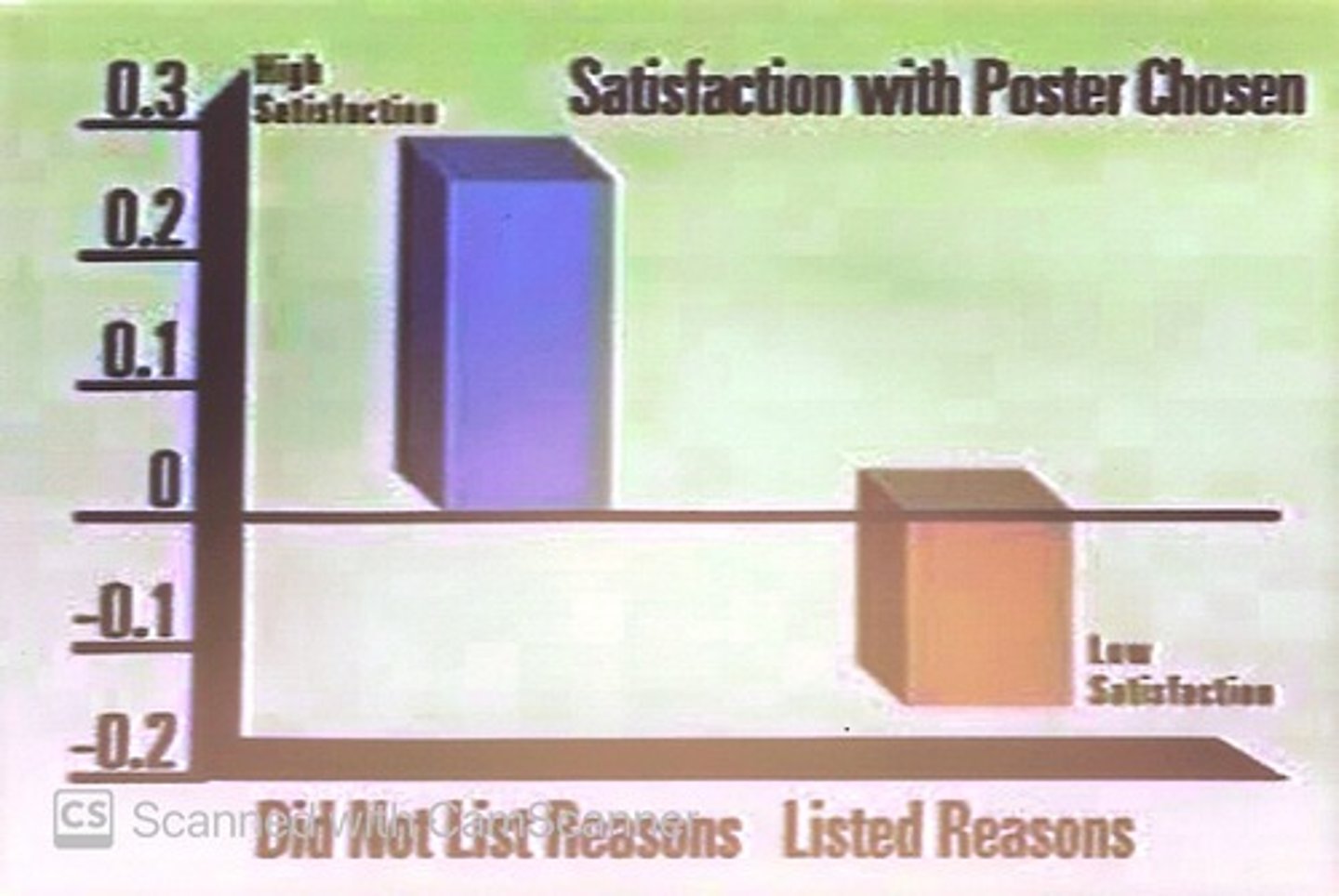
The Multiple-Choice Dilemma: Should You Change Your Answer? (Benjamin, Cavell, & Schallenberger, 1984)
Common belief: "Your first instinct is always right. Don't change your answer!"
Reality (Empirical Data):
20% → Changed from right to wrong
22% → Changed from wrong to another wrong
58% → Changed from wrong to right!
Why do we wrongly believe changing is bad?
1) We remember failures more than successes → "Oh no, I switched to the wrong answer!"
2) Professors reinforce the myth, even though the data disproves it.
Key Takeaway: We remember info that bothers us, while ignoring other stuff (due to availability heuristic).
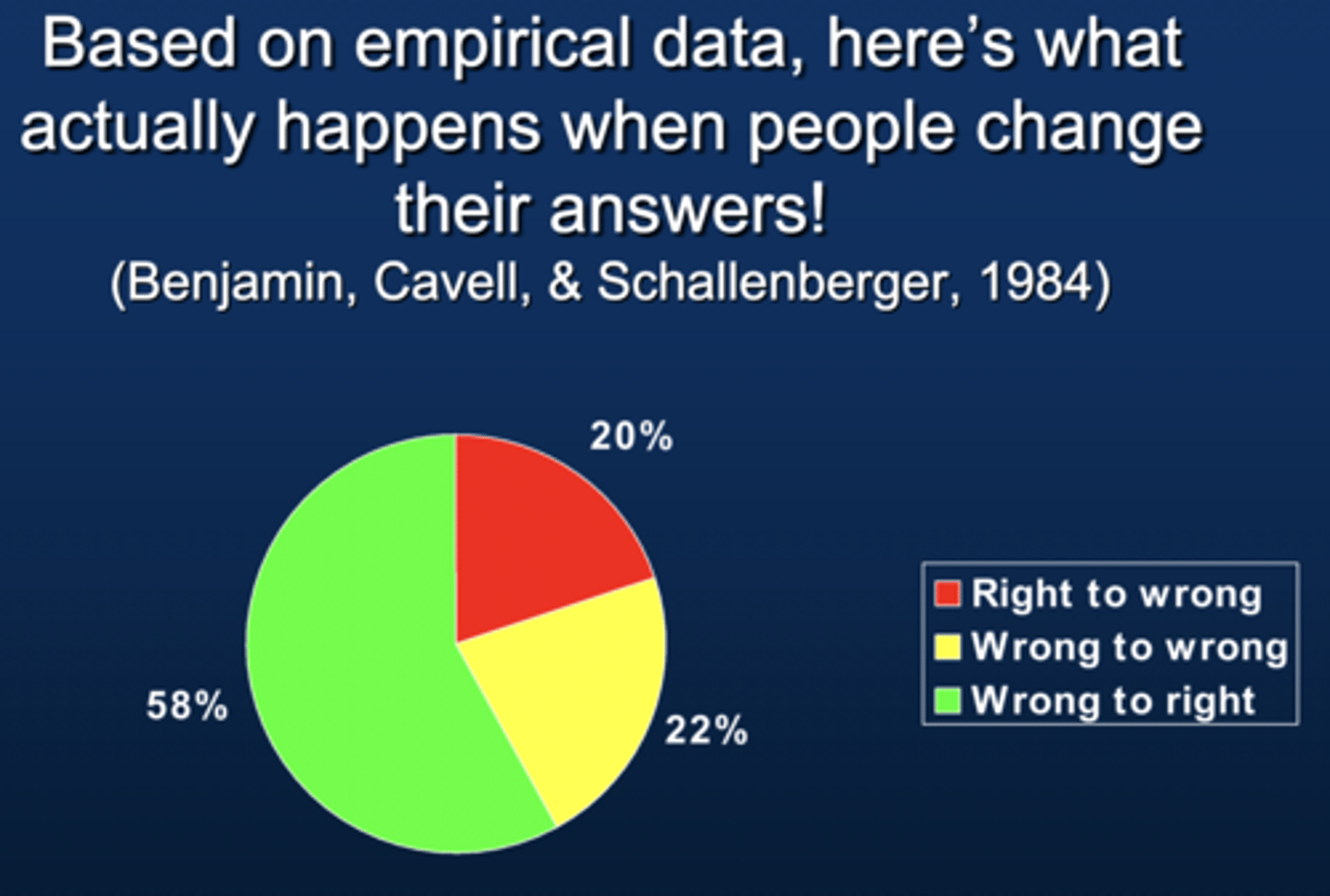
How we come to know ourselves
Self-Perception Theory → When our attitudes or feelings are ambiguous, we infer our internal states by observing our own behaviors and the situation in which they occur.
When asked to explain our own behaviors, self-perception processes are more likely to operate when our feelings are weak or unclear and when we think about the situation in which we behaved.
Example: If you see yourself volunteering a lot, you might conclude: "I must be a generous person!"I
Key Studies: Facial Feedback Hypothesis → Our facial expressions influence emotions from neutral stimuli (triangles or Chinese ideographs).
Participants forced to simulate a smile felt happier.
Those who simulated a frown felt sadder.
Key Takeaway: How people react to a neutral stimuli is, in part, at least a function of facial expressions they've assumed.
Head-Nodding Study:
Nodding (up-down) while hearing a message → Higher agreement.
Shaking head (side-side) → Higher disagreement.
Lever Study:
Pulling a lever toward you while evaluating a symbol → Liked it more.
Pushing it away → Liked it less.
We don’t just think → feel → act. Sometimes, acting first changes how we think and feel!
Self-Perception Theory: Over justification Effect (Greene, Sternberg, & Lepper, 1976)
What happens when you start getting rewarded for something you already love doing? It can backfire!
Study:
Kids were given a toy to play with.
Group 1: Got a reward for playing.
Group 2: No reward. Then, reward was removed.
Result? Kids who had been rewarded played LESS than those who were never rewarded!
Why?
They reinterpreted their motivation → "I was doing this because of the reward!"
When the reward disappeared, they lost interest.
Key Takeaway: Extrinsic rewards can undermine intrinsic motivation if people infer they were doing it for the reward, not because they liked it.
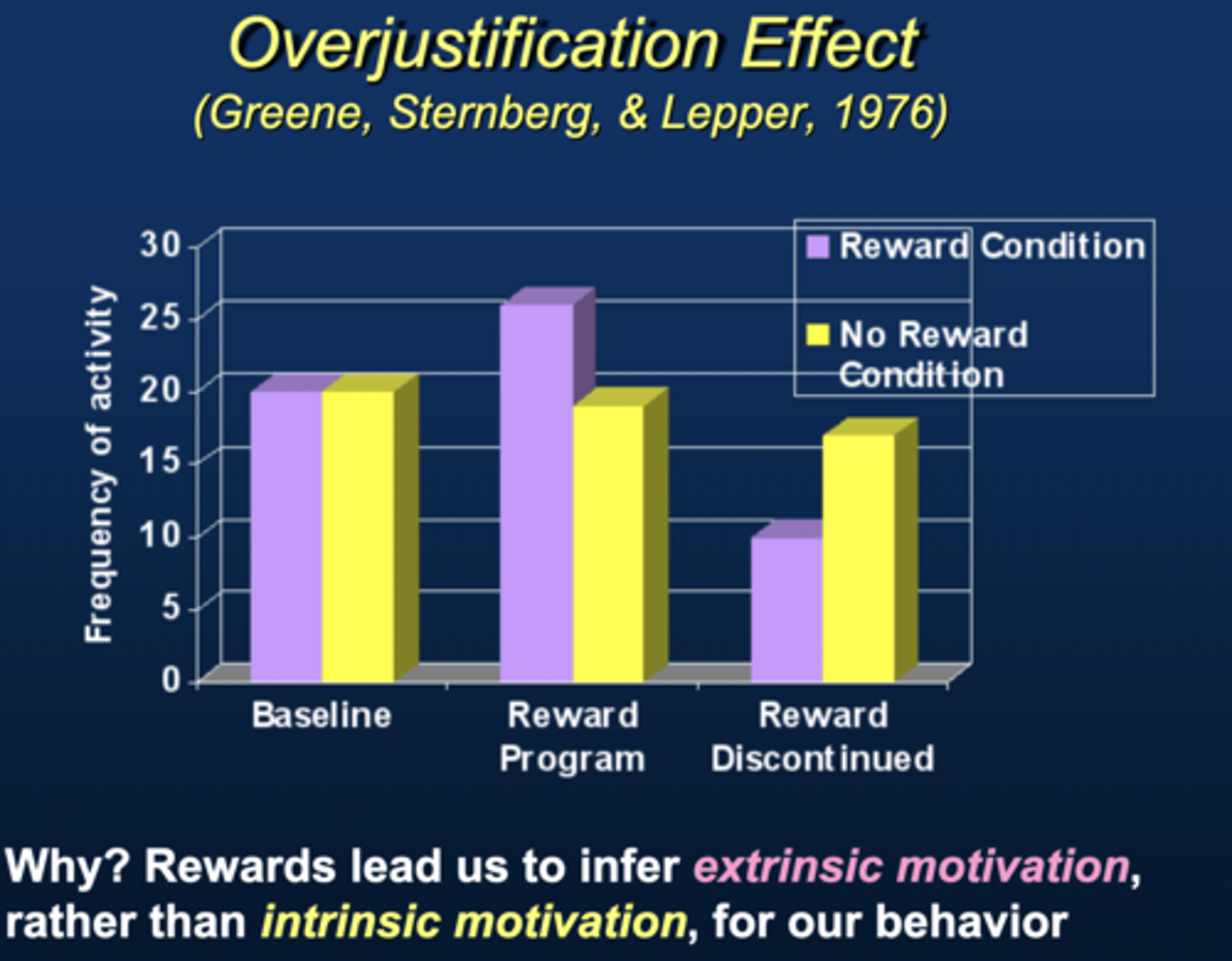
Social Comparison Theory
Who do we compare ourselves to?
Reference Groups → People similar to us.
Types of Comparisons:
Upward Social Comparison → Comparing to someone better than us. Pros: Motivational boost! Cons: Can hurt self-esteem Downward Social Comparison → Comparing to someone worse off. Pros: Boosts self-esteem! Cons: No motivation.
In ambiguous situations, comparisons can provide useful info.
Key Takeaway: Social comparisons help us self-evaluate but can impact our emotions and motivation.
Two-factor Theory of Emotion (Schachter & Singer, 1962)
1) Physiological Arousal
2) "Label" of arousal → We interpret the arousal based on context.
"Suproxin" Study: Participants got a placebo or epinephrine which causes arousal, and told it helps vision.
Group 1: Informed → Told about side effects.
Group 2: Uninformed → Not told about side effects.
Both groups placed with an actor (confederate):
Hostile actor → Uninformed participants felt angrier.
Euphoric actor → Uninformed participants felt happier.
Key Takeaway: If we don’t know the source of arousal, we look to social cues or SITUATION to determine our emotion.
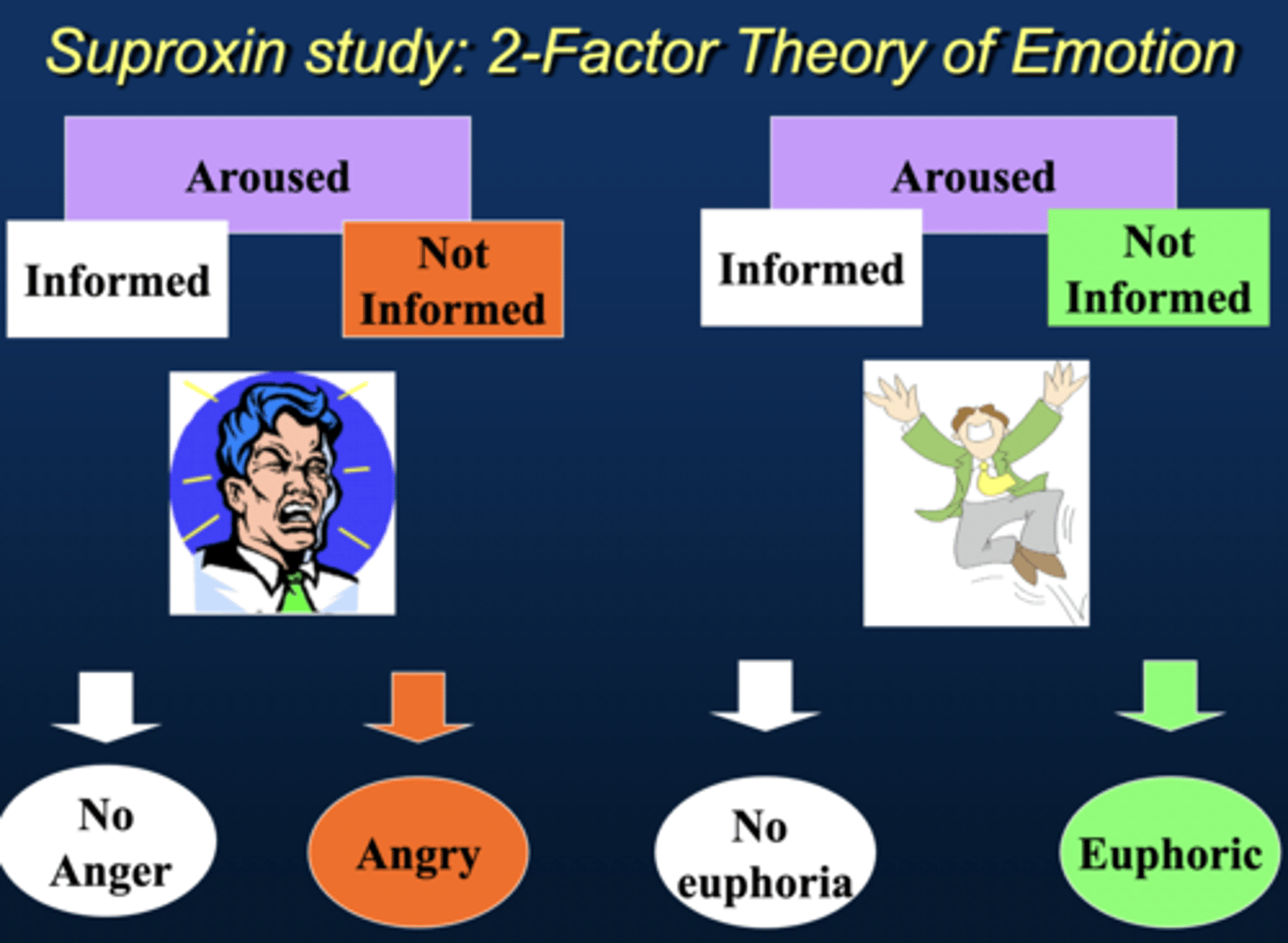
Misattribution of Arousal (Dutton & Aron, 1974)
People sometimes mistake the source of their emotional state.
Study: Men crossed a low sturdy bridge OR a high, scary bridge.
At the end, a female experimenter gave them her number. Men who crossed the scary bridge were MORE likely to call her!
Why? They misattributed their fear-based arousal as attraction.
Key Takeaway: Arousal from one source (e.g., fear) can be misattributed as another emotion (e.g., attraction).
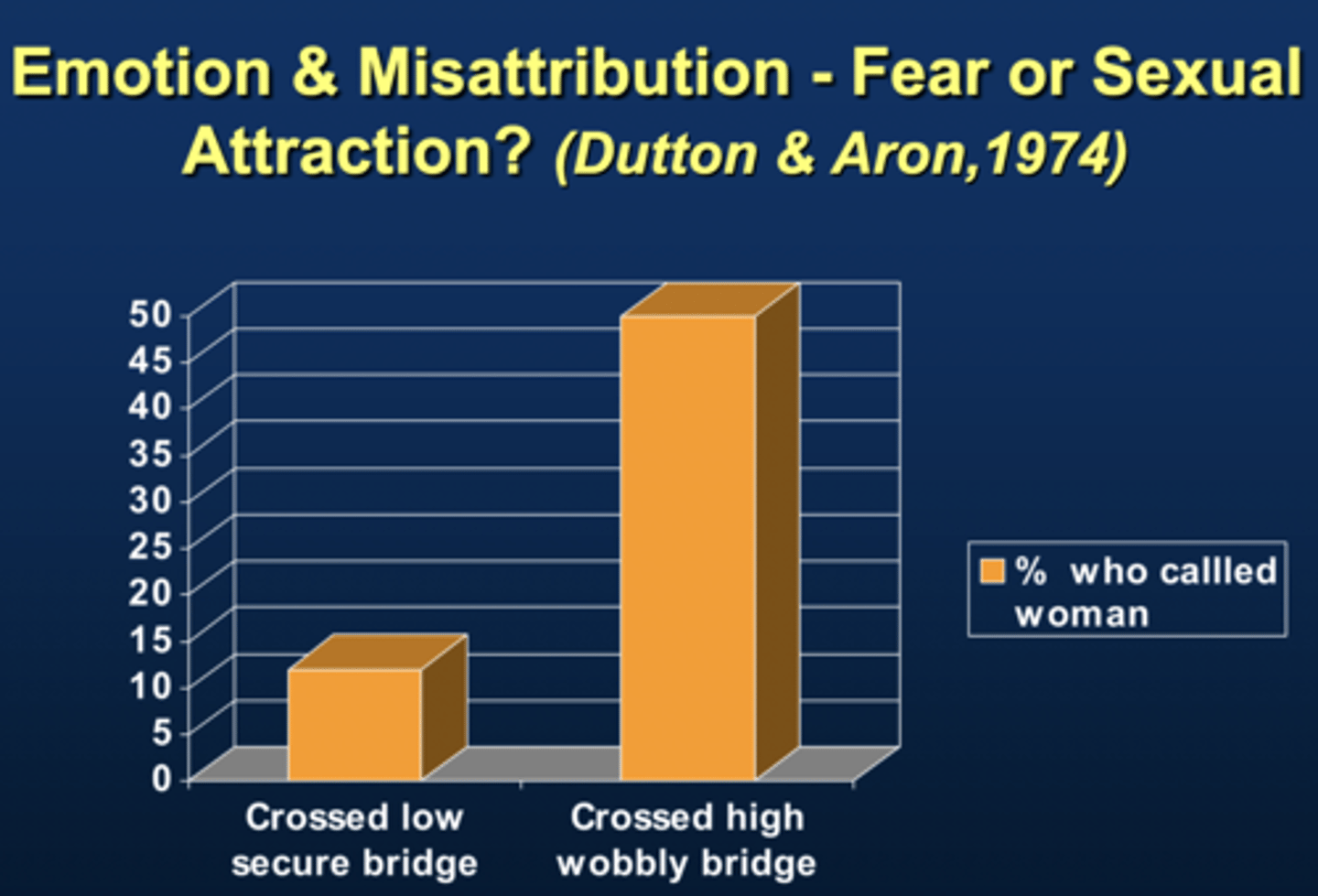
Self-Presentation Phenomena: Impression Management
Spotlight Effect → Overestimating how much people notice us.
Study: Students wore an embarrassing T-shirt → they thought more people noticed than actually did!
Illusion of Transparency → Thinking others can "read" our thoughts and emotions better than they actually can.
Self-Handicapping → Creating excuses to avoid failure (an internal attribution for failure); When someone doubt their ability to succeed --> protects self-worth.
False Modesty → Publicly downplaying success while privately believing otherwise.
Study: Participants were asked to write a success story.
Group 1: Read it in front of an audience.
Group 2: Researcher will read it anonymously.
Result: When others were watching, participants were more likely to acknowledge help from others.
When no one was watching, expressions of gratitude dropped significantly.
Key Takeaway: People often publicly thank others to maintain a socially desirable image (appearing humble), but when there's no audience, they downplay the role of others in their success.
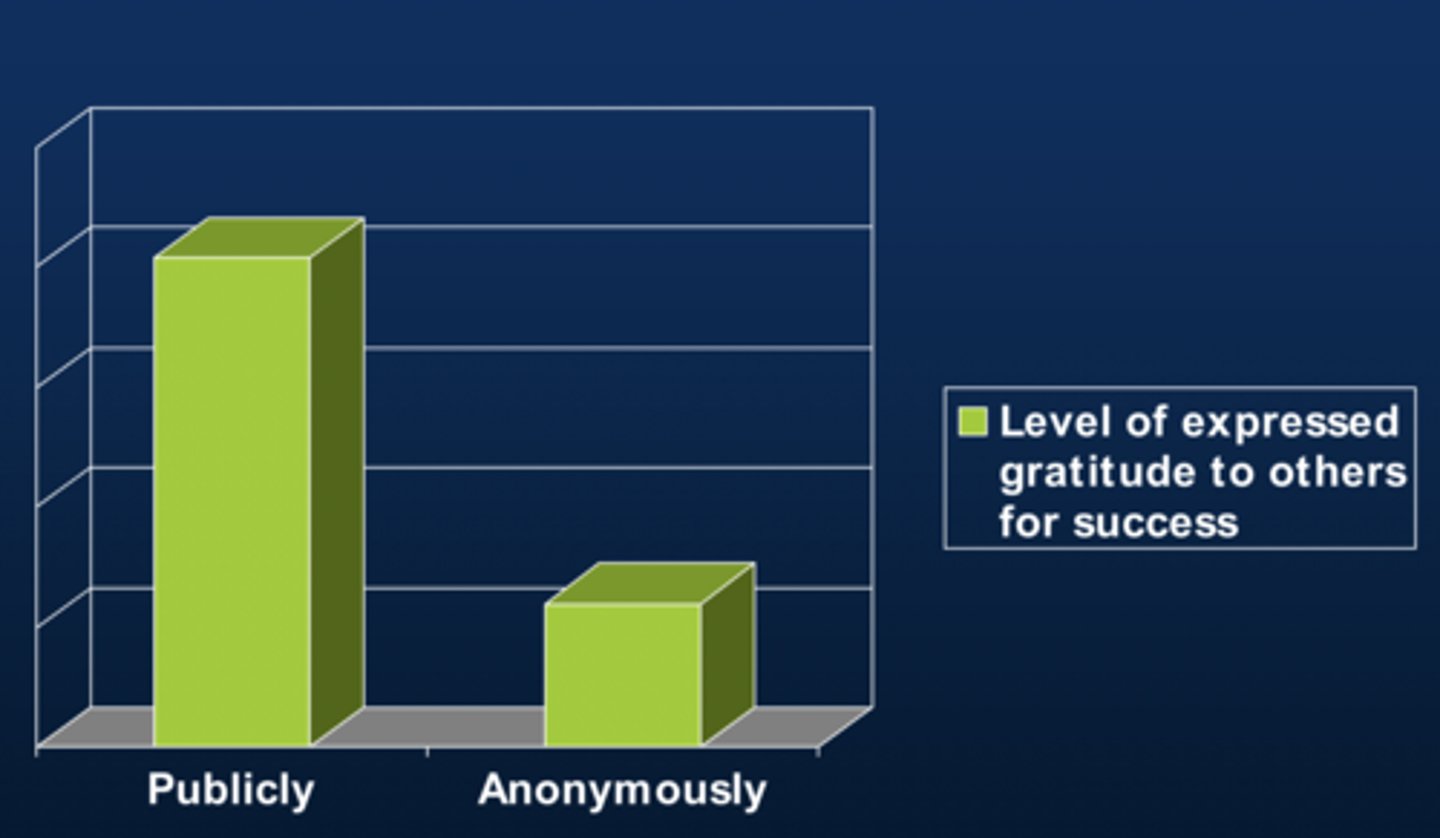
The Big Picture: How biased are we toward the self and is it adaptive or not?
Biases exert themselves when information is ambiguous or lacking, or judgments are subjective.
Motives are multiple:
Accuracy – Helps make adaptive decisions and behavior (e.g., if you're terrible at singing, you avoid a career as a singer).
Self-Verification (Homeostasis) – People seek confirmation of their self-concept, even if it’s negative and search info that confirms it.
Self-Enhancement – The tendency to see oneself as competent, moral, and capable. (increases Self-Esteem)
→ The self is social, defined in part by and subject to the influence of others, as individuals and as groups.
A little self-serving deception may be adaptive: Unrealistic optimism & Depressive Realism
How can unrealistic optimism be adaptive?
It fuels persistence and innovation by encouraging people to pursue ambitious goals despite obstacles.
Examples: Wright brothers – Despite being ridiculed, they persisted and achieved human flight.
JFK’s moon mission – Seemed impossible, yet it succeeded.
Elon Musk & SpaceX – Initially dismissed as a failure, later revolutionized space travel.
Depressive realism?
Depressed individuals perceive reality more accurately, particularly how others perceive them.
While most people overestimate how positively they are viewed, depressed individuals don’t.
Is Self-Deception Beneficial? (Sackheim & Gur Study)
Assessed self-deception using an "embarrassing admissions" measure.
Those who scored highest in self-deception were better off psychologically, socially, and physically.
Suggests some self-deception is beneficial for well-being and success.
Key note: Self-Deceiving isn't the same as lying -- which means you know you're telling an untruth.
Study on competitive swimmers: those with higher self-deception were more successful.
When Self-Serving Biases Become a Problem
90% of managers believe they are better than their peers
Marital housework perceptions:
Women say they do 70%
Men say they do 45% (total = 115%) --> both are overestimating.
Overestimation of contributions leads to resentment and conflict.
Success in groups: Members take more credit than deserved
When failure occurs, blame is shifted onto others
High Self-Esteem and Threatened Egotism
Contrary to belief, low self-esteem is not always linked to aggression.
Violent criminals, bullies, and perpetrators of genocide often have high self-appraisals and self-esteem (better-than average effect).
Inflated self-esteem → "Threatened Egotism"
Feeling disrespected when others don’t validate their high self-view
Leads to aggression, hostility, and conflict
